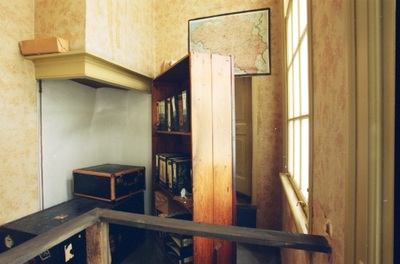

Simone van Hoof, a spokesman for the book’s publishing house, Lantaarn, said: “We can’t claim that this is 100% the answer but we really do think it is a part of the puzzle that may be able to complete the story.” We have not been able to find evidence for this theory, nor for other betrayal theories.” “Ans van Dijk was included as a potential traitor in this study. In 2016, the Anne Frank House carried out research into the arrest of the Frank family and the other four people in hiding in the secret annex. “We consider Gerard Kremer’s book as a tribute to his parents, based on what he remembers and has heard. Her published diary spans the period in hiding between 19.Ī spokeswoman for Anne Frank House said the museum had been in touch with the author of The Backyard of the Secret Annex, but that there remained no proof of Van Dijk’s guilt. The 15-year-old was sent to the Westerbork transit camp, and on to Auschwitz before finally ending up at Bergen-Belsen, where she died in February 1945 from typhus. The Franks were arrested on 4 August, while Van Dijk was said to have left for The Hague.Īnne had been hidden for two years in the concealed annex above the canalside warehouse with her father, Otto, mother, Edith, and sister, Margot. The book suggests that in early August 1944, Kremer overheard Van Dijk taking part in discussions in the Nazi offices about Prinsengracht, where the Franks were hiding. She would also use the telephones in the requisitioned offices, Kremer noticed.

It is claimed that after her arrest on Easter Sunday 1943 by the Nazi intelligence service known as the the Sicherheitsdienst, Van Dijk became a regular visitor to the building, albeit in disguise. But, the Anne Frank House museum and research centre had been unable to come to any conclusion, despite police investigations and its own studies.įresh claims have now been made in a book by Gerard Kremer, 70, the son of a member of the Dutch resistance of the same name, who was an acquaintance of Van Dijk in Amsterdam.Īccording to the book, Kremer Sr, who died in 1978, was the caretaker of an office building at the back of Prinsengracht on Amsterdam’s Westermarkt, two floors of which was taken over by the German authorities and the Dutch Nazi organisation the NSB during the occupation of the Netherlands. The involvement of Ans van Dijk, who was executed in 1948 after admitting to collaborating in the capture of 145 people, including her own brother and his family, had been previously claimed.


 0 kommentar(er)
0 kommentar(er)
